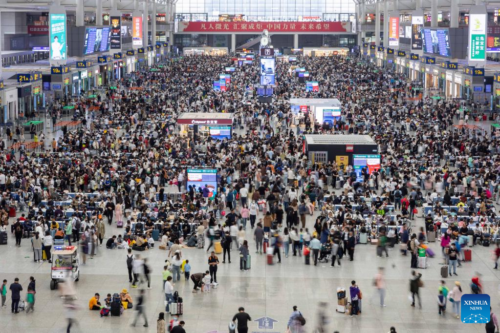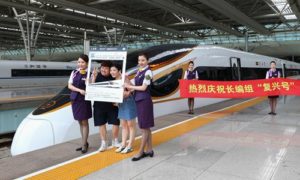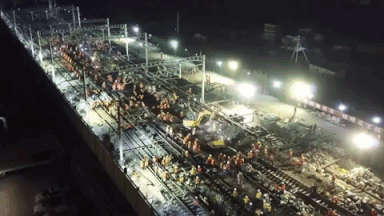The Last Train to Canton?
Despite competition from rail, road, and river, the through train remained the most comfortable and efficient means of getting between Hong Kong and Guangzhou, bridging the two major Cantonese-speaking cities.

On April 29, the South China Morning Post reported that the cross-border train service between Hong Kong and Guangzhou (more commonly known as the “through train”), which has been suspended since the onset of the pandemic, will be permanently discontinued, citing “sources familiar with the situation.” The MTR corporation issued a statement but did not confirm or deny this possibility.
The news has invoked remonstration among railway buffs and speculation — in the highly politicized climate of Hong Kong — as to the underlying reasons for the service’s prospective demise.
This is because the Kowloon Canton Railway, or KCR, is a railway with emotion and sentiment etched into every wooden sleeper and slab of steel. The 35 kilometers of railway south of the border — known as the Guangzhou–Kowloon when combined with the 147 kilometers of tracks north of the border — has been a significant part of life for Pearl River Delta residents for over a century. Indeed, the KCR’s story in many ways runs parallel with the convoluted passage China forged as it moved from the era of “railway imperialism” to its current status as a high-speed rail powerhouse.
A brief intro to Chinese rail

It was the British who laid the first track on Chinese soil, the Woosung Road in Shanghai, which was inaugurated on July 1, 1876, and ran for little over a year before Qing officials had it dismantled. China was reluctant to embrace the Iron Horse, fearing that the railway would intrude on heaven’s domain and offend the principles of fengshui, or even wake the dead. “The spirit of the ancestors would not be able to rest,” wrote Kong Delin, a distant descendent of Confucius, when petitioning the Guangxu Emperor over proposals from British and German engineers to lay tracks through Confucius’s hometown of Qufu in 1904.
Progressives in the Qing court had been struggling since the 1870s to get railways built in China but met stiff opposition from conservative factions. Official attitudes started to change after defeat in the First Sino-Japanese War of 1885, which triggered the realization that China had fallen technologically behind its rivals. Despite widespread frustration with foreign powers chipping away at the Qing Empire’s territorial integrity, the Chinese had no choice but to work with the “imperialists” in building China’s nascent railways, ranging from the French-engineered Kunming–Haiphong Railway in the southwest to Tsarist Russia engineers who made a shortcut through Manchuria when building their epic Trans-Siberian Railway.
The southern province of Guangdong had a long relationship with the West, beginning when Portuguese caravels made their way to the Pearl River estuary in 1514. In 1745, the Qianlong Emperor introduced the “Canton System,” whereby all foreign trade was to be channeled through Guangzhou. This lasted until the conclusion of the First Opium War in 1842, after which five treaty ports were opened up and the island of Hong Kong was ceded to Great Britain in perpetuity.
The British expanded their southern foothold after the Second Opium War ceded them the Kowloon peninsula in 1860. Yet the border was kept porous, allowing people to come and go from the crown colony relatively freely. And while the settlement of Victoria developed into a sizable English sea port, Guangzhou remained the regional trade hub.
In 1898, the same year Britain obtained a 99-year lease of the New Territories, a concession was obtained by the British & Chinese Corporation, a joint venture formed in 1898 between the trading company of Jardine Matheson & Co. and the Hong Kong and Shanghai Bank to build a railway from Hong Kong to Guangzhou. Beginning in 1906, the British would build their section from the tip of Kowloon — still delineated by the harborfront clocktower — and Lo Wu (Luohu) on the Chinese border in what is now Shenzhen.
The day of its inauguration, October 1, 1910, was captured in film. The photograph, now hanging in the Shenzhen Museum, shows a small wood station occupied by mustached English gents in top hats and Chinese men still sporting the queue — long “pigtail” haircuts mandated by their Manchu rulers — watching a steam train arrive.
The Chinese section, dubbed — somewhat confusingly — the Canton Kowloon Railway, was completed a year later, in October 1911, thus enabling cross-border rail traffic for the first time.
The through train
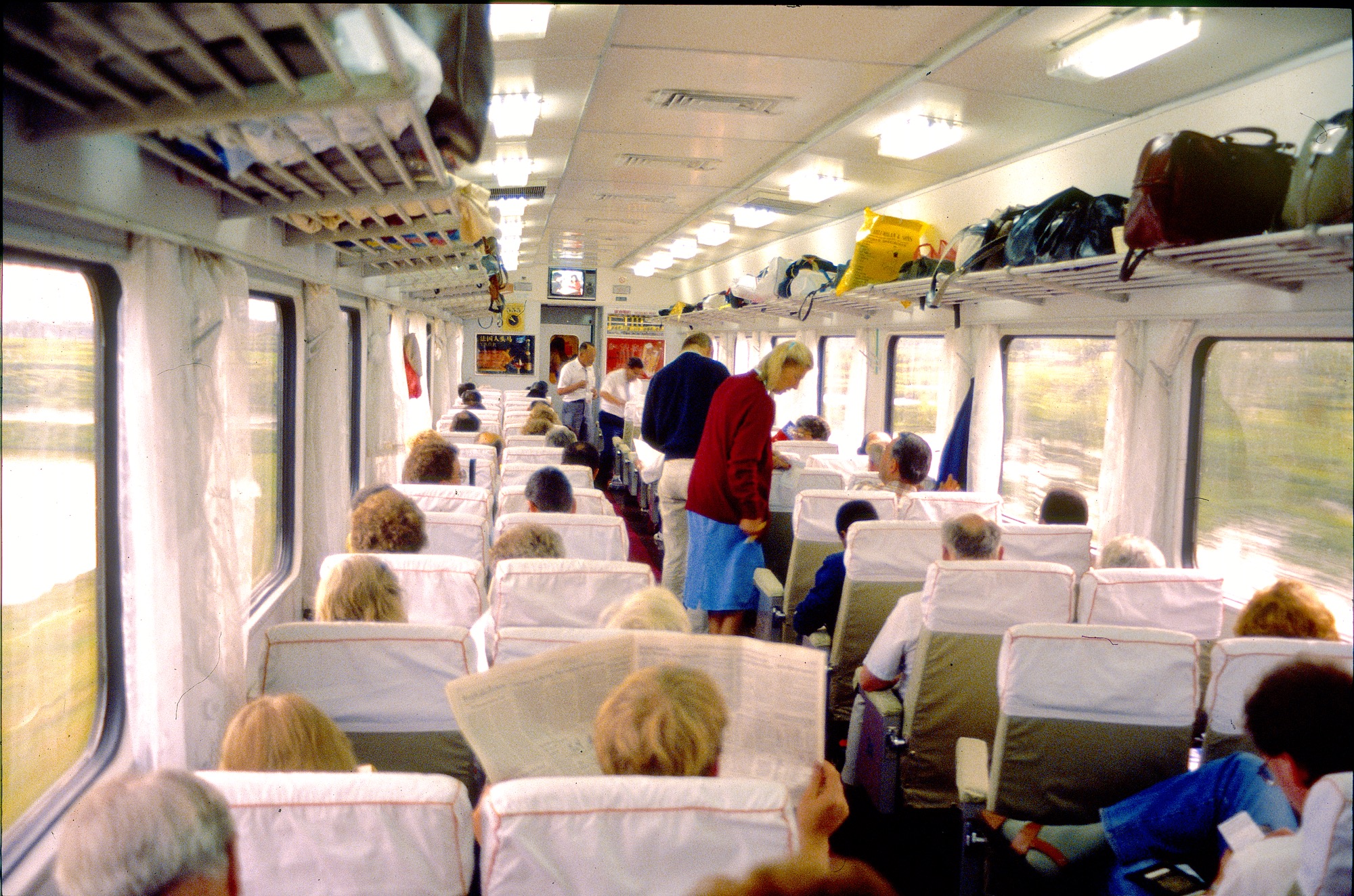
Although the line would prove a popular and profitable one, marking, from 1936 onwards, the southeastern leg of a pan-Eurasian railway network, it would not be without disruption. During the Japanese occupation of Hong Kong that began in late 1941, the KCR almost ceased service. Cross-border traffic would enjoy a brief renaissance in the late-’40s: services were re-introduced 1946 and ran until October 14, 1949, the day before Canton fell to the Communists.
Communist victory on the mainland created a hard border between capitalist Hong Kong and “Red China.” At this juncture, the story of the railway divides, as Hong Kong entered a period of rapid economic growth while the People’s Republic stagnated. Steam had fully given way to diesel in the territory by 1962 while double tracking and electrification works began in late 1970s. The first electric train services only started in the spring of 1982 between Kowloon and Sha Tin. New stations were opened in the New Territories, the population having ballooned with immigrants fleeing the chaos of Mao’s China.
It was only with Dèng Xiǎopíng’s 邓小平 “open door policy” that people started traveling in China again. Cross-border traffic officially resumed in 1979.
“We took the train to the border, then walked across the steel railway bridge across the Shum Chun River,” Hong Kong-based China guidebook publisher Magnus Bartlett recalls of the steel structure that served as the gateway to the south. The old bridge is still preserved in a small park near the Lo Wu immigration crossing.
Once the bamboo curtain was fully raised, the railway became part of a globe-spanning network again. Train buffs like Scotsman Bruce Connolly started taking full advantage of a world wired together by rail. Connolly recalls: “In July 1987, I was nearing the end of a rail journey from Scotland to Hong Kong. Guangzhou was terribly hot and humid. I remember queuing in that heat and carrying luggage. But the train carriage interiors were cool and pleasant, with wide soft seats. Tea was served in plastic cups. The landscape was composed of small villages, rice paddies, buffaloes pulling plows, and villagers carrying baskets from bamboo shoulder poles. It was amazing to watch. These places are large cities today, like Dongguan.”
The rapid industrial development of the Pearl River Delta region has spurred the growth of transport links on both sides of the Hong Kong–Shenzhen divide, including cross-border coach and ferry services as well as the MTR’s East Rail Line that links the original KCR stations before delivering travelers to Lok Ma Chau or Lo Wu, the latter just a short distance from the Shenzhen Railway Station, where you can hop the thrice-hourly Guangshen Express service to Guangzhou that traces the original mainland transport corridor opened in 1911.
But despite competition from road, river, and an expanded rail network, the through train service that followed the original route from Kowloon–Canton remained the most comfortable and efficient means of getting between Hong Kong and Guangzhou, bridging the two major Cantonese-speaking cities.
In 2018, however, a high-speed rail terminus opened in West Kowloon after a decade of controversy. Its inauguration in September of that year may have signaled the beginning of the end for the through train.
The encroachment of high-speed rail
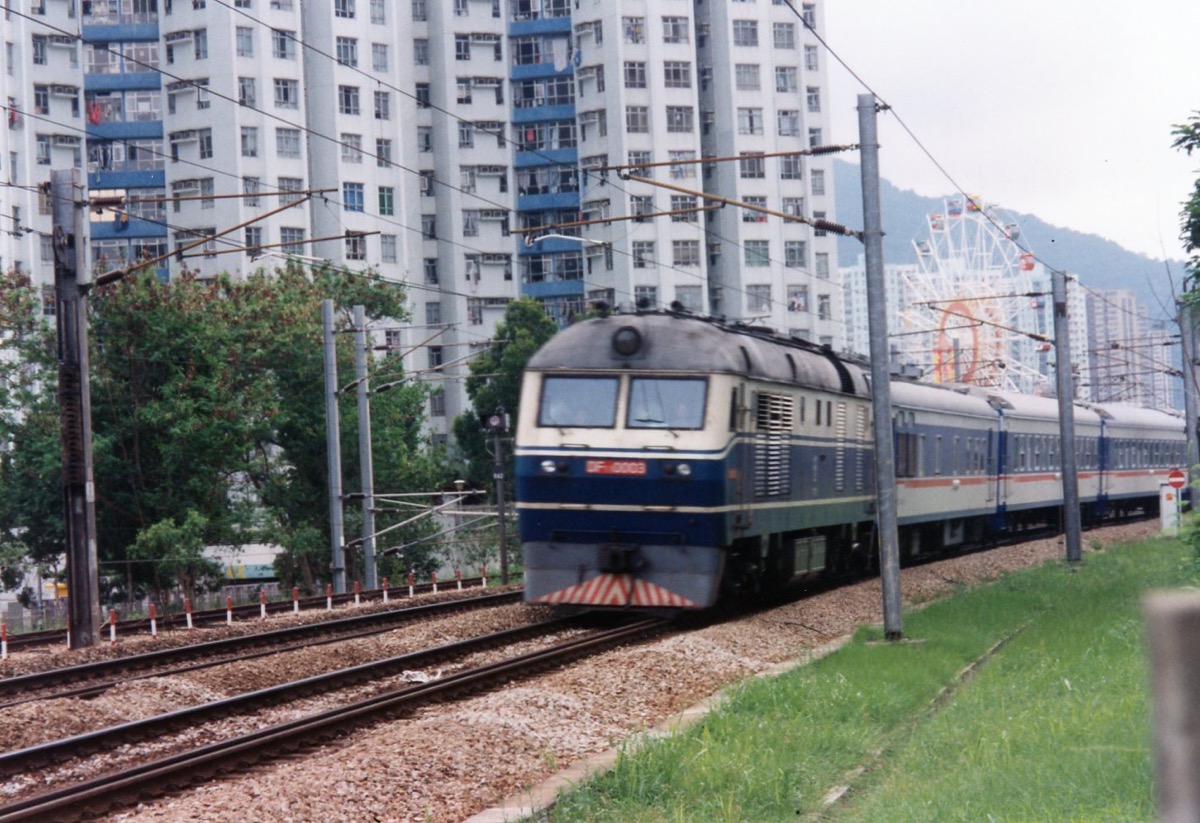
High-speed rails had been spreading across mainland China like a spider’s web since 2008. But the Special Administrative Region operated under very different conditions, and locals did not welcome a high-speed rail connection.
The complaints began in 2008 when 150 households comprising Choi Yuen Village in the New Territories were told they would have to leave their homes to make way for railway construction. The villagers resisted and thousands of Hongkongers rallied in their support. Protests, legal battles and even hunger strikes ensued until the villagers finally accepted the government’s compensation and left their homes in 2011. Resistance to the high-speed railway gradually became part of a broader struggle against the widely held perception that the mainland was not respecting Hong Kong’s autonomy, which had been promised for 50 years when it was returned to China in 1997 under the Basic Law. Later, it was announced that the West Kowloon terminus would have mainland checkpoint officials stationed in a zone subject to mainland laws further inflaming anti-China sentiment.
Wherever one stood on the political divide, what united concerned parties was the question of whether or not the high-speed link was really needed, especially after costs skyrocketed from HK$66.9 billion to HK$84.4 billion ($11 billion) and, well, there was that perfectly good through train to begin with.
“Before the pandemic, the through train was still the fastest way to Hong Kong, although it was always a lottery whether you caught modern Hong Kong operated double-decker trainer or the more Soviet looking Guangdong operated trains,” says Guangzhou-based lawyer Peter Fenton, noting that the through train gets you from one city center to another, not a suburban station. “Although its speed was slower than the high-speed train (or the Guangshen Express) it was faster than crossing the Lo Wu border or, commuting from Guangzhou South Station, which is 40 minutes from the downtown area.”
Many observers perceive the high-speed railway, like the Hong Kong–Zhuhai–Macau Bridge, as a white elephant built at huge public expense simply to integrate Hong Kong into what is now termed the Greater Bay Area (GBA). To those that see the high-speed railway’s construction as an anchor to the mainland, the perception that the through train’s cancellation is political will be hard to shake.
For others, the high-speed railway experience is simply clinical, stations like Guangzhou South soulless depots, and the possible loss of the through train is invoking the same kind of emotions as the potential loss of the iconic Star Ferries that cross Victoria Harbor, which have also hit the headlines due to pandemic-induced financial difficulties.
“In 1998 I took the 20 hour service to Shanghai, traveling in a four bed, soft cabin,” wistfully recalls railway historian Peter Crush of a time when a Chinese railway odyssey invariably began at Hung Hom and followed the historic KCR passage as far as Guangzhou before branching onto another national railway.
There’s also considerable nostalgia for the through train’s delta passage, which gently rocked its way across brown distributaries, factory hamlets and banana plantations, tower blocks and fish farms, offering window gazers an intimate tour of the delta region in all its subtropical glory.
“The train was an icon of travel,” says Connolly, who lives in Beijing but regularly took the through train when he taught in Guangzhou in the 1990s. “There was something kind of romantic about boarding it. Its demise is sad, and a bit of what we are seeing today in China with the incredible expansion of the high-speed lines. Fewer and fewer people are using the conventional trains, they are in too much of a rush. They’re always surprised when I opt to take an overnight, slow train across China nowadays.”

